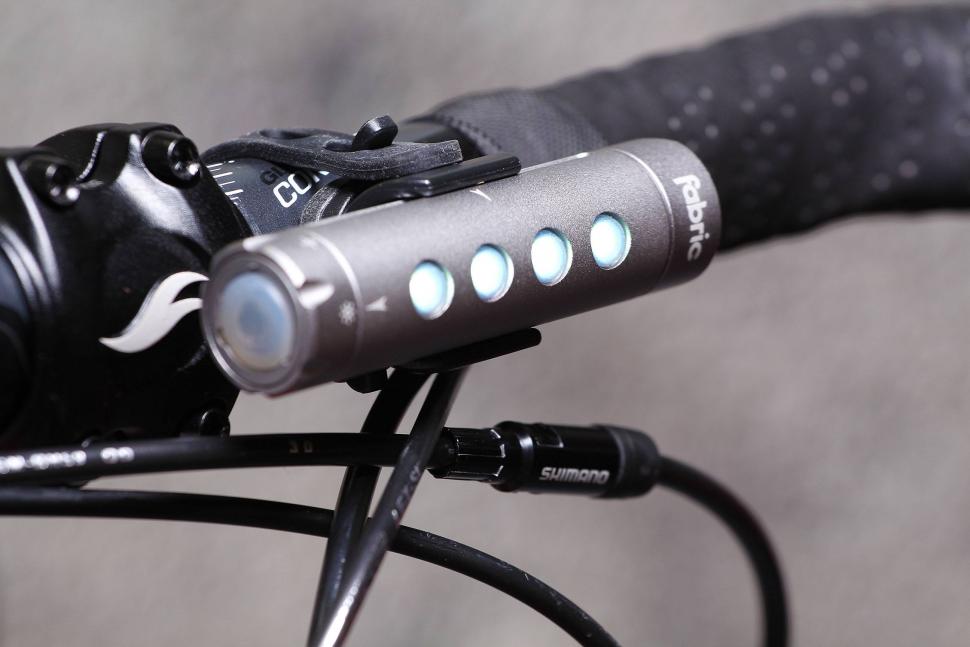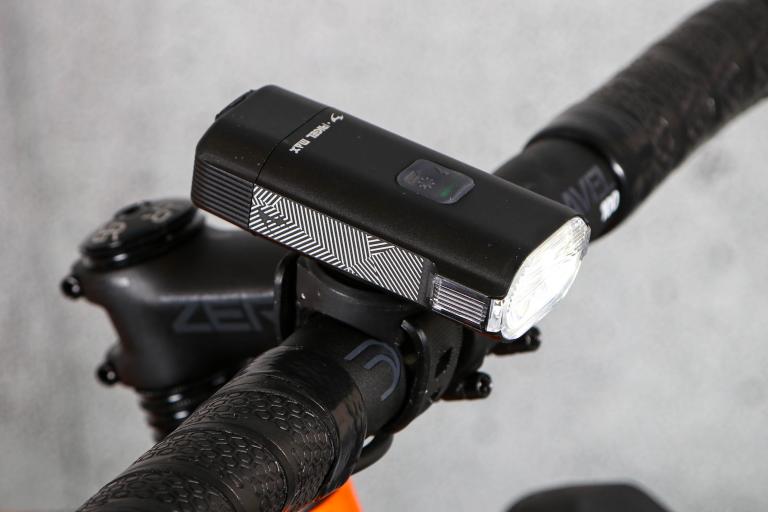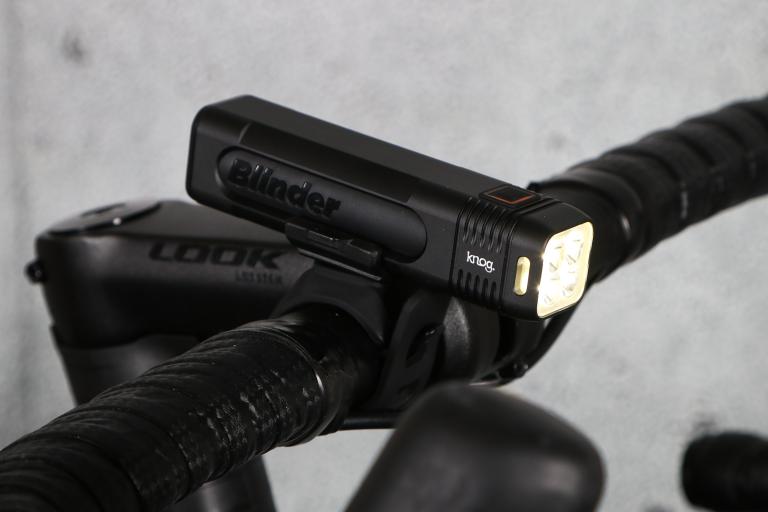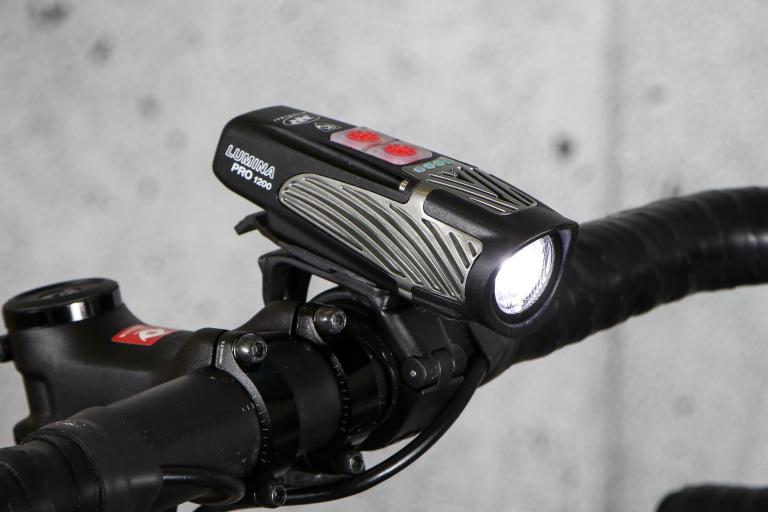- News
- Reviews
- Bikes
- Components
- Bar tape & grips
- Bottom brackets
- Brake & gear cables
- Brake & STI levers
- Brake pads & spares
- Brakes
- Cassettes & freewheels
- Chains
- Chainsets & chainrings
- Derailleurs - front
- Derailleurs - rear
- Forks
- Gear levers & shifters
- Groupsets
- Handlebars & extensions
- Headsets
- Hubs
- Inner tubes
- Pedals
- Quick releases & skewers
- Saddles
- Seatposts
- Stems
- Wheels
- Tyres
- Tubeless valves
- Accessories
- Accessories - misc
- Computer mounts
- Bags
- Bar ends
- Bike bags & cases
- Bottle cages
- Bottles
- Cameras
- Car racks
- Child seats
- Computers
- Glasses
- GPS units
- Helmets
- Lights - front
- Lights - rear
- Lights - sets
- Locks
- Mirrors
- Mudguards
- Racks
- Pumps & CO2 inflators
- Puncture kits
- Reflectives
- Smart watches
- Stands and racks
- Trailers
- Clothing
- Health, fitness and nutrition
- Tools and workshop
- Miscellaneous
- Buyers Guides
- Features
- Forum
- Recommends
- Podcast
review
£49.99
VERDICT:
Innovative and capable, it can light your way and come to the rescue
Weight:
75g
Contact:
At road.cc every product is thoroughly tested for as long as it takes to get a proper insight into how well it works. Our reviewers are experienced cyclists that we trust to be objective. While we strive to ensure that opinions expressed are backed up by facts, reviews are by their nature an informed opinion, not a definitive verdict. We don't intentionally try to break anything (except locks) but we do try to look for weak points in any design. The overall score is not just an average of the other scores: it reflects both a product's function and value – with value determined by how a product compares with items of similar spec, quality, and price.
What the road.cc scores meanGood scores are more common than bad, because fortunately good products are more common than bad.
- Exceptional
- Excellent
- Very Good
- Good
- Quite good
- Average
- Not so good
- Poor
- Bad
- Appalling
Despite its compact size, the Fabric FL300 front light has enough bite for rides beyond city limits. There are brighter front lights for the money (or less), but its ability to convert from standard lamp to emergency front – or rear – blinkie really adds to its appeal.
At 90x23mm the FL300, with its sandblasted silver 6061 casing, occupies minimal bar space. Weighing a moderate 75g, it's unobtrusive enough for helmet use, should you fancy using it to complement more powerful bike-mounted lighting. It meets IPX5 waterproofing standards and I've had no problems with persistent, heavy rain. Sustained blasts from the garden hose haven't revealed any weaknesses either.
> Find your nearest dealer here
Behind the lens lives a single Cree LED capable of producing a claimed 300 lumens. A further four, less powerful diodes run across the top; more about these in a minute.
Charging is via micro USB and cable, and the lithium-ion battery fills up in an office-friendly two hours, although tack on another 15 or 20 minutes when sipping from a PC or laptop. During this phase, the rubberised on/off switch-cum-charge indicator pulses red and turns clear when fully juiced.
Sustained presses engage the light and determine output; it feels a little remote when wearing winter-weight gloves, but I'd sooner this than a switch that's too easily engaged. All four modes – high and medium constant, flashing and pulsing – are selected by twisting the buttery smooth knurled end. The modes are marked, but selection quickly becomes second nature.
In common with many others, the main beam pattern combines flood for an overview and presence with spot for picking out the details, so you can see hazards and theoretically ride at a smarter pace. Unleashing the full 300 lumens, I have to say I was slightly underwhelmed by its navigational clout: halos and similar imperfections made it difficult to power along shady semi-rural sections beyond 16mph, although this is still a reasonable turn of speed for commuting or training rides that take in shorter unlit sections.
> Check out our guide to the best front lights
Being seen was never a problem thanks to the cutaway lens and pure white beam of light, with most vehicles out in the sticks dipping their lights at around 50-60 metres. Pairing it with a blinkie in built-up areas, I tended to nudge down to the medium setting, closer to 150 lumens and arguably striking the best balance between output and economy. Flashing and pulsing are very distinctive, though flashing's rapid tempo has the edge, passing as a decent daylight mode.
Helmet-mounted, reading road/trail signage proved trickier than with the less powerful BBB ScoutCombo in its highest setting.
Run-times are faithful to those quoted – I've consistently managed two hours in top, three in medium and nigh-on six in pulsing and flashing – which is handy, as you'll need to have an idea of when you might need to power down because there's no low battery warning. No dimming, it just dies. Which leads me on to...
Get you home
The big selling point of the Fabric FL series is their ability to convert to blinkies in an emergency – "offering safe passage home, even when the battery is too drained to light the CREE headlamp," says Fabric – something I have been very grateful for on recent rides. If you're caught out, with a quick tweak of the bracket it mounts vertically or horizontally to accommodate seatpost, handlebar or even seatstays. Twist the selector to engage those four top diodes I mentioned earlier and you then have the option of white or red constant in full or medium, flashing or strobing, with impressive run-times.
For example, for the flashing mode I initially thought the 46 hours run-time from a full charge must have been a misprint, but ours has come pretty damn close. Strobing is even more frugal – Fabric says 58 hours. I've not hit that point yet, but on the basis of others (within 8 minutes of the 6 and 14 hours quoted for full and medium), I'm confident it won't be far off.
Used in this emergency mode, flashing was my default and as a white light, though lacking the main front's bite, seemed to keep me on people's radars when entering the flow of traffic, or performing right turns in town. The steady settings aren't bad, but when mounted horizontally the peripheral bite is relatively impotent.
Red seems more captivating, being visible from 100 metres or so, even on relatively murky evenings. Medium seems around the 12-15 lumen mark and has economy in its favour, although presence wasn't comparable with Cateye's Rapid Micro Rear.
Ultimately, there are relatively few compromises here. The FL300 is not only extremely versatile and, for the time being, unique, but genuinely effective – whichever way it's used. The main light doesn't produce quite the same quality of output compared with the Blackburn Central 300 I tested last year, and our beam comparison engine (see below) also suggests a few others that are both brighter and cheaper – though not as versatile.
If you're in the market for a compact light that can transform into an emergency system in a matter of seconds and is still bright enough for tackling semi-lit rural sections, the FL300 is well worth closer scrutiny.
Verdict
Innovative and capable, it can light your way and come to the rescue
road.cc test report
Make and model: Fabric FL300
Size tested: n/a
Tell us what the light is for, and who it's aimed at. What do the manufacturers say about it? How does that compare to your own feelings about it?
Fabric says: "The FL300 is made from high-quality materials and components. It casts a 300-lumen beam from its CREE headlamp for two hours, and doubles as a 'home safe' option, courtesy of four LEDS mounted in the sandblasted aluminium body. Micro USB-charging."
I'd describe it as an extremely versatile compact light with enough bite for riding beyond city limits.
Tell us some more about the technical aspects of the light?
Width: 23mm
Length: 90mm
IPX5 water proof rating
Materials: Sandblasted aluminium body
Universal mount with rubber strap
Rate the light for quality of construction:
8/10
Rate the light for design and ease of use. How simple was the light to use?
7/10
Intuitive to use.
Rate the light for the design and usability of the clamping system/s
8/10
Simple and dependable in all contexts.
Rate the light for waterproofing. How did it stand up to the elements?
8/10
IPX5 should be more than adequate for most road riders.
Rate the light for battery life. How long did it last? How long did it take to recharge?
8/10
OK charge times and decent run-times; very decent in 'emergency' mode.
Rate the light for performance:
7/10
It's not the brightest for the money, but taking its emergency role into account, it performs competently overall.
Rate the light for durability:
8/10
Rate the light for weight:
8/10
Rate the light for value:
6/10
There are cheaper and brighter, if less versatile, options.
Tell us how the light performed overall when used for its designed purpose
As a compact light for longer commutes/training rides that encompass unlit, semi-rural sections, the Fabric FL300 has a lot to offer. Its ability to transform from main front light to decent safety in emergencies, or during the day, is a distinct boon.
Tell us what you particularly liked about the light
Innovative design and works well in all settings.
Tell us what you particularly disliked about the light
Quality of output wasn't quite on par with some others boasting comparable lumens and/or lower pricetags. An automatic failsafe to SOS when reserves become critical would be welcomed.
Did you enjoy using the light? Yes
Would you consider buying the light? Possibly
Would you recommend the light to a friend? Yes
Use this box to explain your score
It's a clever compact light, though quality of output in the highest mode lags slightly behind several similarly powerful competitors. As a main front light only I would score it 6, but its ability to work as an emergency/day light too lifts its versatility and score to 7.
About the tester
Age: 43
I usually ride: Rough stuff tourer based around 4130 Univega mountain bike frameset My best bike is: 1955 Holdsworth Road Path and several others including cross & traditional road
I've been riding for: Over 20 years I ride: Most days I would class myself as: Experienced
I regularly do the following types of riding: cyclo-cross, commuting, touring, fixed/singlespeed, mountain biking
Shaun Audane is a freelance writer/product tester with over twenty-eight years riding experience, the last twelve (120,000 miles) spent putting bikes and kit through their paces for a variety of publications. Previous generations of his family worked at manufacturing's sharp end, thus Shaun can weld, has a sound understanding of frame building practice and a preference for steel or titanium framesets.
Citing Richard Ballantine and an Au pair as his earliest cycling influences, he is presently writing a cycling book with particular focus upon women, families and disabled audiences (Having been a registered care manager and coached children at Herne Hill Velodrome in earlier careers)
Latest Comments
- David9694 10 min 15 sec ago
Driver Who Broke Runner's Spine in Three Places Praised for Waiting Around Until Help Arrived
- Steve K 47 min 10 sec ago
Even if this gets to 100,000 signatures, I suspect the Petitions Committee will simply say there has already been a debate, so no need for another...
- Born_peddling 8 hours 43 min ago
Muddyfox tour 100's I've wide & flat feet plus there's the optional choice of using cleats with them...
- Prosper0 8 hours 38 min ago
Just doing the Lord's work in case anyone's interested in this product. This Mucoff Pump is a £100 rebrand of an £85 Rockbros rebrand of a £60...
- mdavidford 9 hours 26 min ago
Obviously it means 'springing out of the bunch' on a critical sector. Or maybe it's referring to the time of year.
- David9694 10 hours 13 min ago
Car crashes through garden wall for second time in 18 months https://www.wiltshire999s.co.uk/car-crashes-garden-second-time/
- David9694 10 hours 15 min ago
Woman taken to hospital after flipping car onto roof in Trowbridge...
- A V Lowe 10 hours 57 min ago
Its blindingly obvious from the image that the DKE of the buses include the mirrors which extend to nearly reach the edge of the tarmac pavement on...
- Sredlums 11 hours 30 min ago
It's sad when being very good at your job - any job - isn't enough to earn a decent living. It shouldn't be that way....









Add new comment
1 comments
Just wanted to say what a great review that was.
No Press Release cut and paste here... but a really detailed and thorough commentary from someone who's obviously spent good time with the item and know's what they are talking about.
It's this sort of quality of content that keeps me coming back to "road.cc"
Thanks to the author... Derek